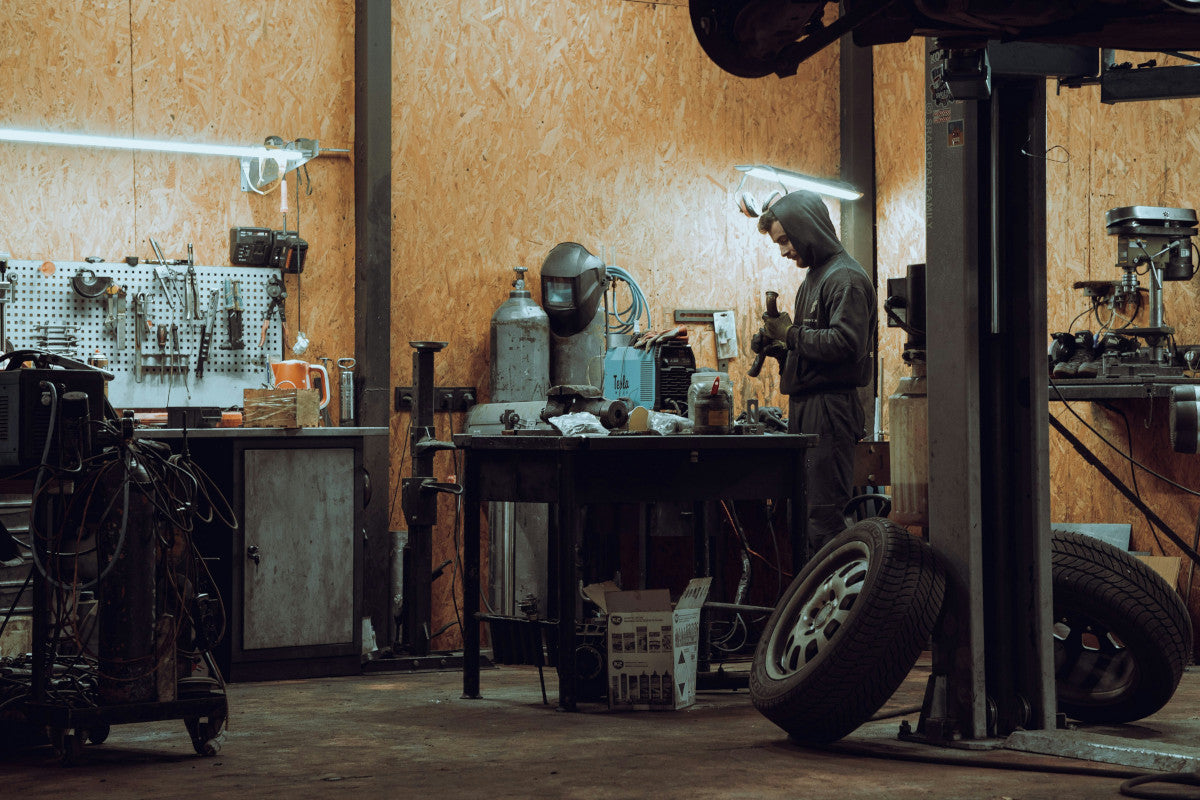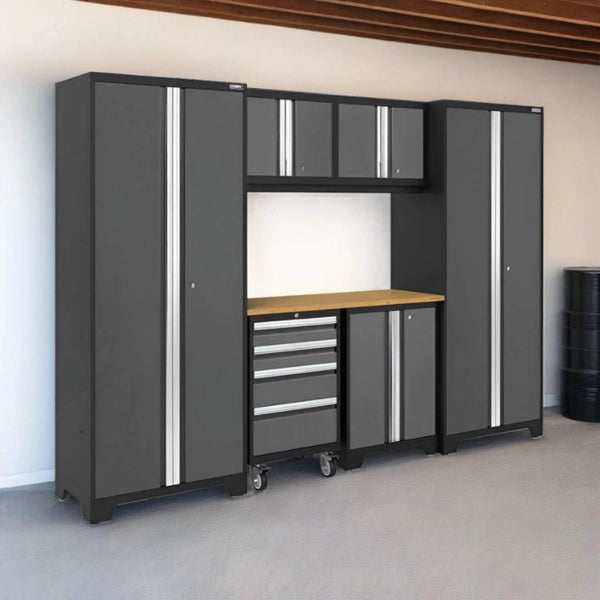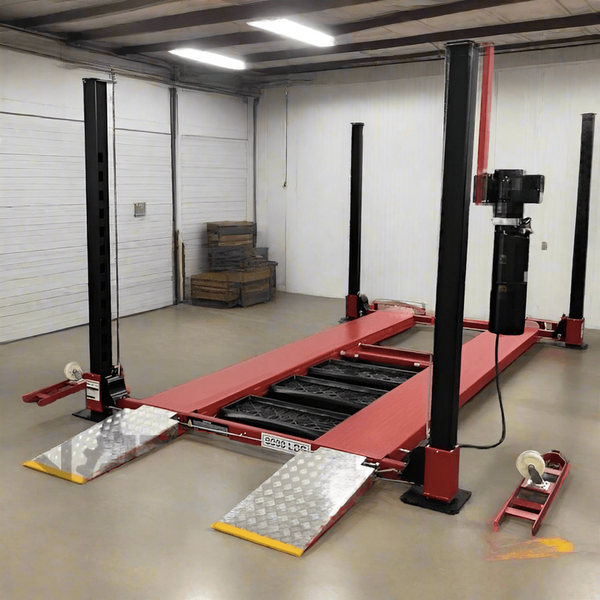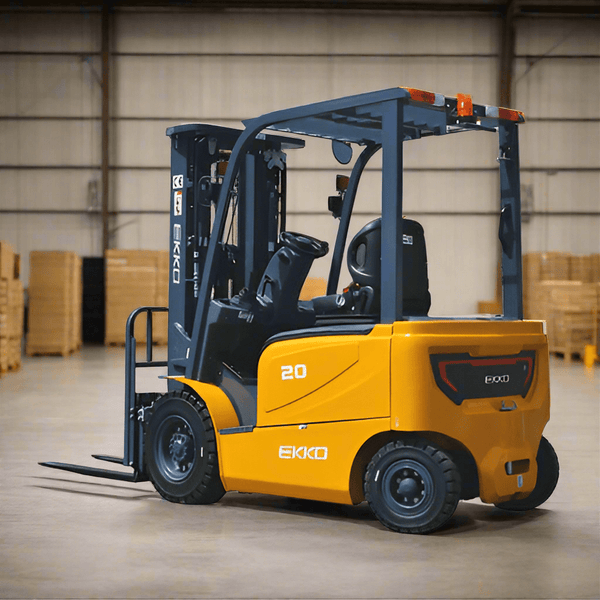
Hydraulic Car Lift Stuck in Up Position
Your car lift is arguably the most important piece of equipment in your garage if you frequently do service to the undercarriage of vehicles. So, it’s obviously frustrating when you encounter a hydraulic car lift stuck in up position. Your operation gets put on pause, and you scramble to figure out a solution so you can get customers back in their vehicles fast.
First, take a deep breath - a lot of the disasters with car lift accidents come from rushing to get the car unstuck through sketchy workarounds. There are simple, calculated steps you should take - here’s a quick guide on how to get a car off a stuck lift:
- Inspect the safety locks
- Check the hydraulic system
- Test the electrical controls
- Attempt a controlled lowering
Caution: there are some cases where you should wait for a professional to help you. If the lift is uneven or leaning, you hear strange noises, or see damage to cables, hoses, or seals, you should sit on standby for expert guidance.
As the most trusted choice for a car lift for garage online, we’ll share some tips on car lift maintenance below that will help you avoid this issue going forward, too. First, let’s dive into some of the common causes of a hydraulic car lift stuck in up position.
Common Reasons a Lift Gets Stuck
There are only a handful of culprits you could be dealing with when your lift gets stuck. It’s almost always the safety locks - the mechanical stops designed to catch the lift at different heights. The lift stays locked in place if they don’t release properly.
Another thing we see pretty often is low or contaminated hydraulic fluid, which prevents the cylinders from building or releasing pressure. Or, it could be air trapped in the system, which causes inconsistent movement. Worn hydraulic seals can stop the lift from cycling correctly, too.
But if it’s not any of these things, you’re probably dealing with something electrical - faulty switches, motors, or wiring can all interrupt the lowering process. We’ll walk you through troubleshooting a hydraulic car lift stuck in up position safely below.
Troubleshooting Hydraulic Car Lift Stuck in Up Position
The next step once you understand all the possible causes is working through the problem methodically. The goal is to stay safe while identifying whether the issue is mechanical, hydraulic, or electrical.
On that note, we’ll remind you once more: the worst move you can make is rushing. Don’t try to drive the vehicle off or force the lift down with makeshift tools. Clear the area of bystanders and keep only essential personnel nearby. Always treat the lift as if it could move unexpectedly.
With that said, you’ll want to start with a safety lock inspection.
Inspect the Safety Locks
Most hydraulic lifts use a ratcheting lock system that clicks into place at different heights. Start by checking whether the locks are engaged. Some lifts require a manual release lever, while others disengage automatically when lowering.
Lubricate the mechanism or use the manufacturer’s release procedure if the locks are jammed. Never try to wedge or pry them open.
Check the Hydraulic System
Next, move to the hydraulics. Look at the fluid reservoir: is the level low, or does the fluid look dirty or foamy? Either issue can prevent smooth lowering.
You can also scan for visible leaks along hoses and fittings. If air has entered the system, the lift may need to be bled before it will operate normally again.
Test the Electrical Controls
If the locks are free and the hydraulics look normal, test the electrical system. Start with the basics: check circuit breakers, fuses, and power supply.
Listen when you press the lowering button - do you hear the motor running, or is it silent? A silent pump points to an electrical problem, while a running pump with no movement leans back toward hydraulics.
Attempt a Controlled Lowering
Dealing with a hydraulic car lift stuck in up position is never fun, but most lifts include a manual release valve for situations like this.
With no one under the vehicle, slowly open the valve to bleed pressure and lower the lift. Follow the manufacturer’s instructions closely. Opening it too quickly can drop the lift unevenly or damage seals. If the lift still doesn’t move, stop there and call in a professional.
When to Call a Professional for Help
Some problems with a stuck lift are worth attempting to troubleshoot, but others call for professional hands. Don’t go any further if the lift is tilted, uneven, or making loud grinding or popping noises. These are signs of structural stress that shouldn’t be ignored. Leaking hydraulic fluid, damaged hoses, or electrical shorts are also red flags that go beyond basic DIY fixes.
There’s even more on the line for commercial shops. OSHA regulations, insurance requirements, and customer safety all demand certified service. You don’t want to inadvertently void your warranty, either.
The peace of mind that comes with a qualified technician setting things right is often worth more than the service fee, even for home garages. A professional will not only diagnose the issue faster but also spot underlying problems that could lead to future breakdowns.
Speaking of future breakdowns, though, let’s look at some things you can do to prevent this problem from popping up again down the road.
Preventing Future Lift Malfunctions
An ounce of prevention is worth a pound of cure. A lift that’s well cared for is far less likely to get stuck mid-use. Building a simple maintenance routine into your shop or home garage can keep things running smoothly for years. Here’s what we suggest:
- Check hydraulic fluid regularly: Low or dirty fluid is one of the most common causes of lift issues. Top it off as needed and replace it on schedule.
- Inspect cables, bolts, and locks: Make a habit of checking hardware for looseness or wear. Re-torque anchor bolts and lubricate lock mechanisms to prevent sticking.
- Listen for changes in operation: Grinding noises, uneven lifting, or jerky motion are early signs something needs attention. Addressing them early saves money and downtime.
- Keep the area clean: Dust, debris, and spilled fluids around the base of the lift can interfere with moving parts and create slip hazards.
- Schedule professional inspections: Commercial shops often do this quarterly or annually, but even residential lifts benefit from a technician giving them a once-over.
If you’re constantly dealing with this issue, though, it’s a sign you’re due for an upgrade. Investing in the top models from the best car lift brands will save you money in the long run. You can count on My Garage Supplies to help you find the right model.
We’ve handpicked the industry’s most trusted equipment and back it up with unbeatable prices and customer service along the way, from our 2 post car lift lineup to our 4 post car lift collection, single-post car lift options, and everything in between.
Whether you’re considering Bendpak vs Atlas, not sure if you need a 110v vs 220v car lift, or just want a personalized recommendation based on your garage and budget, get in touch today.
Parting Thoughts on How to Get a Car Off a Stuck Lift
There’s no doubt that a hydraulic car lift stuck in up position is stressful, but troubleshooting and avoiding the issue is relatively straightforward. Know the common causes, troubleshoot methodically, and never cut corners on safety.
Some issues, like jammed safety locks or low fluid, can be handled pretty easily. Others, though, will call for more professional servicing. But don’t keep dealing with this issue over and over again - it could be time to replace your lift. That’s where we come in.
Explore our collection of car lifts and shop equipment built for both home garages and commercial shops. Improve safety and efficiency with our help today!



